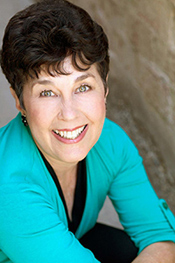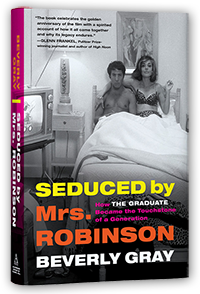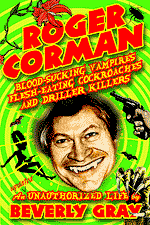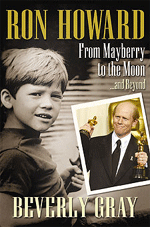When the Academy Awards are handed out on February 22, the
statuette for Best Costume Design will probably go to a film with bravura
fantasy elements, like Maleficent or Into the Woods. But the very opinionated
Deborah Nadoolman Landis suggests that each acting Oscar should be paired with
a costume design Oscar. She cites the distinctive look of Javier Bardem in No Country for Old Men. Though Bardem
was honored as Best Supporting Actor for that film, no one thought to
acknowledge the role of the costume designer in contributing to his indelible
characterization. Yet costumes instantly telegraph to the audience key
information about a screen character. And the actors themselves often rely on
costumes to help them prepare for their roles. As Deborah told me, “Very often
they find out who they are, or who they’re going to be, in the fitting
room.”
Deborah is currently riding high as the curator of the
magnificent “Hollywood Costume” exhibit that wowed the crowds at London’s
Victoria and Albert Museum and is now doing the same (through March 2) in Los
Angeles, under the auspices of the Academy of Motion Picture Arts and Sciences.
A costume designer herself, she came up with the iconic red jacket worn by
Michael Jackson in the music video “Thriller,” directed by her husband John
Landis. She was Oscar-nominated in 1989
for the Eddie Murphy comedy, Coming to
America, and created the unforgettable look of Indiana Jones in 1981’s Raiders of the Lost Ark. “Hollywood
Costume” contains a vivid section explaining how Indy’s leather jacket got its
lived-in look: on the film set she slashed it repeatedly with a knife, after
which she and Harrison Ford took turns sitting on it.
I met Deborah in 2008, while researching films of the Sixties.
We talked over lunch at a Beverly Hills café, and I quickly discovered what a
candid person she is. In the course of our chat, I learned a lot about her
family life, her weight issues, and the fact that you’ll never get away with
leaving off the pecans on her spinach salad. I also learned how much the role
of the costume designer has changed since the industry was young. In
Hollywood’s Golden Age, Louis B. Mayer told Helen Rose that when she was
designing the wardrobe for film actors, the goal was to “just make them
beautiful.” That was the era when everyone on screen was impeccably dressed and
groomed, the better to delight the man and woman on the street, who couldn’t
afford such luxury.
As time passed, street clothing got increasingly informal,
and the designer was now expected to reflect the new reality. But it took the
Hollywood studios a while to get the message. Deborah entered the industry in
1975, with a newly minted MFA in costume design from UCLA. She remembers “a tremendous disconnect
between Hollywood – between the production of Hollywood – and what was actually
happening on the street.” In studio
costume workrooms she found “everybody was so
old. . . . They were craftspeople, artisans, from Vienna and Berlin. They were
all refugees. These were women who were used to making the most beautiful
dresses and suits in the world. Couture. They weren’t gonna make dirty jeans or
torn jeans or hippie gear. So how were they gonna cope with movies about the
Summer of Love? “
What did Deborah wear at our lunch? Casual clothing that
made no lasting impression at all. Far be it from her to trick herself out in
an ensemble that, like an over-designed film costume, “doesn’t quite disappear
the way it should.”








I have enjoyed Ms. Nadoolman's work in many movies - and what a feather in her cap to have designed that iconic Indiana Jones outfit. Wow. I can only imagine how hard it must have been for the aging costumers of the old studio system trying to adjust to the realism of 70's cinema. I only just found out that a sound mixer I worked with in the 90's - Richard Van Dyke - had costume professionals in his family - his grandmother was Renie Conley - Oscar winner for Cleopatra - and his mother was a fashion show producer who worked often with Edith Head - and Edith Head was a close friend of the family - and helped young Richard with set visits and connections. Richard's been in sound since the mid 70's on shows like Moonlighting and American Beauty. I'm bugging him for stories now about his earlier years hanging out with Edith Head - because - well, you know...
ReplyDeleteHurrah for Deborah, who was just honored by the Costume Designers Guild with the Edith Head Award for the Advancement and Education of the Art of Costume Design. I'd love to hear more about Richard Van Dyke. Perhaps you (or he) can remind me once again of the difference between sound mixing and sound editing. I've been told before, but it simply doesn't stick!
ReplyDelete